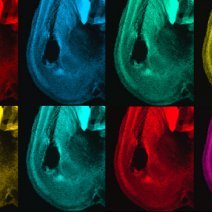Microglia maintain structural integrity during fetal brain morphogenesis
Lawrence AR, Canzi A*, Bridlance C* […] Thion MS#, Lokmane L#, and Garel S#
Authors :
Akindé René Lawrence, Alice Canzi*, Cécile Bridlance*, Nicolas Olivié, Claire Lansonneur, Clarissa Catale, Lara Pizzamiglio, Benoit Kloeckner, Aymeric Silvin, David A D Munro, Aurélien Fortoul, Davide Boido, Feriel Zehani, Hugues Cartonnet, Sarah Viguier, Guillaume Oller, Paola Squarzoni, Adrien Candat, Julie Helft, Cécile Allet, Francoise Watrin, Jean-Bernard Manent, Pierre Paoletti, Denis Thieffry , Laura Cantini, Clare Pridans, Josef Priller, Antoinette Gélot, Paolo Giacobini, Luisa Ciobanu, Florent Ginhoux, Morgane Sonia Thion# , Ludmilla Lokmane# and Sonia Garel#.
Summary
Microglia (MG), the brain-resident macrophages, play major roles in health and disease via a diversity of cellular states. While embryonic MG display a large heterogeneity of cellular distribution and transcriptomic states, their functions remain poorly characterized. Here, we uncovered a role for MG in the maintenance of structural integrity at two fetal cortical boundaries. At these boundaries between structures that grow in distinct directions, embryonic MG accumulate, display a state resembling post-natal axon-tract-associated microglia (ATM) and prevent the progression of microcavities into large cavitary lesions, in part via a mechanism involving the ATM-factor Spp1. MG and Spp1 furthermore contribute to the rapid repair of lesions, collectively highlighting protective functions that preserve the fetal brain from physiological morphogenetic stress and injury. Our study thus highlights key major roles for embryonic MG and Spp1 in maintaining structural integrity during morphogenesis, with major implications for our understanding of MG functions and brain development.
Cell. 2024 Jan 31:S0092-8674(24)00044-8. doi : 10.1016/j.cell.2024.01.012.


